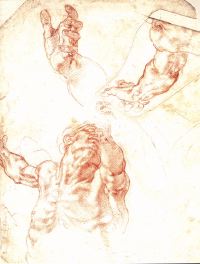Throughout history, there have been numerous attempts by the financial sector to make money from the successful appreciation of art investments. However, as the readings seem to indicate, this is a very risky business which has not seen much success. Despite this, art investment funds have recently seen a revival of sorts in the 21st century. The art market is turning towards commodification as it never has before, and many investors see this as an opportunity to get in early and earn high levels of profit by strategic buying and selling plans. Unfortunately, this practice has really not become much less risky as one can see in the large number of abandoned funds in the early 2000s. The problem with the market's stability is partially due to the inefficiencies of the market and also the distinctly different way that art is valued as compared to many other categories of assets. Art can be tricky to value because it is worth what someone is willing to pay for it at the time. Its price is also not an island unto itself. The price of an art work can shift dramatically due to several factors including the selling price of other works by the same artist, the artist's continued or discontinued ability to produce new works, the historical significance of the piece, the reputation of the galleries or dealers that have a share in the artist (as representatives or holders of other works), the piece's individual history, and general media hype about the artist him/herself. Therefore accurately predicting the value of a work can be difficult. Some see these fluid market changes as an opportunity to manipulate the market, but given the complex nature of the art market and its fragile infrastructure of ego and speculation, this opportunity can soon become treacherous. Further, there are many who believe that the practice itself of turning work into a commodity can strip the work of all symbolic and cultural value, which can significantly alter its desirability on the market. Even if a work is "worth a lot", it is actually worth nothing if no one else is willing to buy it from you.
In reality, after seeing the statistics on the failure of art funds, I might not see this as enough of a viable option for making money and would forego the opportunity entirely. However, if I did decide that I wanted to try my hand at a market were others had been unsuccessful, it would have to be carefully plotted and full of fallbacks in the case of market failure. Like a good portfolio, I think it would be important that the fund be diversified. All though this might limit the overall profit of one sector which is highly successful, it would also mitigate losses if the other end of the spectrum should arise. To diversify the portfolio it would be important to have several different genres of work, work from a range of time periods, and artists of varying levels of fame and repute. The art would be collected as follows:
15% old masters and Renaissance/Baroque period work (50% painting, 20% drawing, 30% sculpture/structure)
25% contemporary art (40% painting, 20% sculpture, 30% print, photography, new media, 10% film)
30% impressionist/ modernism
15% antiquities
15% old masters (non-western/Asian, Indian, Middle Eastern, African regions)
My fund's strategy would have to employ an array of marketing, advertising, and commercial activities to ensure the longstanding value of the work held. Work held in the fund would be loaned for a percentage of its purchased value to members of the fund for no longer than 1 year with insurance, loaned to major museums and institutions with solid reputations, loaned to galleries for temporary exhibition, or loaned to collectors with reputable collections. Selected works would be put on exhibition, specifically curated to highlight the cultural value of the work held by the fund, which would be open to public viewing, media coverage, entrance fees. Media coverage of artists represented by the fund would be highly encouraged, and the fund might even publish its own books or informational publications to inspire faith in the stability of the fund and its artists.
The work in the fund would be acquired from "distressed" sales of work being sold at low prices by collectors, galleries, or even museums in need of capital. It will be held by the fund for no less than 10 years, at the end of which time all work will be sold from the fund in a series of 5 auctions, each covering a particular category of art held. These auctions will be highly publicized before the event, and will be by invitation only to increase exclusivity and potential price ranges of work by competition and feelings of "now or never". Investors in the fund would be able to invest a minimum of 10,000 dollars, with hopes of 10-15% returns.
Some art the fund would hope to acquire would include:
Donatello
http://karlzipser.com/mich1jpg/haman2.jpg
Michelangelo
http://jameswagner.com/mt_archives/Chris_Martin_Glitter_Painting.jpg
Christopher Martin
http://4.bp.blogspot.com/_XZfUU_433lQ/TOGA8JWv7LI/AAAAAAAAAzs/hpLQdRzKTJk/s320/picasso33.JPG
Pablo Picasso
http://www.artinamericamagazine.com/files/2009/10/26/img-kraus-1_173038618769.jpg_standalone.jpg http://www.artinamericamagazine.com/files/2009/10/26/img-kraus-1_173038618769.jpg_standalone.jpg
Kitty Kraus
http://theartblog.org/blog/wp-content/uploaded/nickcave-300x225.jpg
Nick Cave




